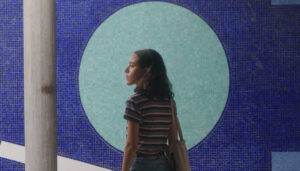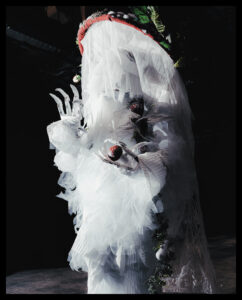What scares you?
Most people tend to be uneasy around spiders and in small, cramped spaces. Darkness, public speaking and death are also among the most common fears. With Halloween around the corner, the main objective is to scare and be scared, whether it be by playing pranks, watching horror movies or dressing up as all manner of ghosts and ghouls. Most of us tend to enjoy being scared a little — if we didn’t, zombie films wouldn’t be so popular and Stephen King would be out of a job.
However, phobias, from the Greek phobos meaning morbid fear, are far more serious: They’re anxiety disorders defined by irrational aversions to social situations, physical stimuli and specific objects. In the United States, about four to five per cent of people develop serious phobias within a given year, and the condition tends to affect women more often than men.
Some sufferers experience mild stress and anxiety as a result of their phobias; in serious cases, phobias can seriously impede the quality of life of those who suffer from them. Most people who have phobias know that their fears are irrational, but are unable to conquer them without the help of a therapist.
Some phobias are well-known: claustrophobia, agoraphobia and dentophobia have become household terms, and the suffix –phobia has come to be used non-clinically to denote prejudices, such as xenophobia and homophobia. However, some phobias are strange and much less common than your average fear of death. The Peak has compiled a list of ten of the most bizarre phobias out there, which are weird and wonderful to just about everyone except those who suffer from them.
Fear of the colour yellow
Not-so-mellow: Xanthophobia is the intense and irrational fear of the colour yellow. This includes objects that are yellow, such as daffodils, bananas, number two pencils and lemonade. In extreme cases, sufferers may fear the word yellow, and avoid mentioning the colour entirely. Like most phobias, xanthophobia usually develops as a result of childhood trauma involving the colour yellow. For reasons unknown to scientists, yellow is the most commonly feared colour, although phobias of the colours orange, red and black also exist. In any case, xanthophobes should be advised to avoid Coldplay songs and sunflower patches at all costs.
Fear of number four
Tetraphobia is the fear of the number four, and it’s actually a lot more common than you may think. In most varieties of Chinese, as well as Chinese variants of Japanese, Vietnamese and Korean, the word for four is very similar or identical to the word for death. (In Cantonese, the number 24 is particularly bad, as it sounds eerily like “easy to die.”) Because of this, many East Asians believe that the number four is an omen of death or ill will, and avoid speaking it or writing it during holidays or when a family member is sick. In countries where tetraphobia is common, the fourth floor of hospitals, apartment buildings and hotels are often skipped — in areas of China with large English-speaking populations, floor 13 is also avoided, leading to some seriously convoluted building plans.
Fear of long words
Sadly, Hippopotomonstrosesquipedaliophobia — the fear of long words — is not, strictly speaking, real. The phobia of excessively long words does exist, but its real name, sesquipedaliophobia, is far less ironic. The former term, which is so long and unpronounceable that the mere thought of it likely sends sufferers of this particular phobia into fits, includes mentions of monsters and hippopotamuses in a satirical effort to make the fear sound more intimidating. No word on which trickster added these extra prefixes, although I’m sure they’re off somewhere chuckling to themselves. As for the fear itself, it’s common in children and teenagers, and often leads to difficulties in school and with reading. It may also lead to more common phobias, such as bibliophobia, the fear of books and printed material.
Fear of beards
Pogonophobia is the fear of beards, and it’s often used to describe fear of facial hair in general. Though it’s usually used euphemistically to describe people who aren’t fond of chin fleece, for many the fear of beards is very real: it’s listed as a phobia in the Diagnostic and Statistical Manual of Mental Disorders, and the Beard Liberation Front, a British interest group that is very much a real thing, has formed their ideology around the premise that beardism — discrimination against peach fuzz patrons — is a damaging form of discrimination in our modern society. Before you laugh this off, consider that Disney’s ban against beards for park workers was only lifted last year, after more than a half-century of clean shaven autocracy.
Fear of holes
Trypophobia is the fear of small holes, or repetitive patterns. Think strawberries, beehives and ant holes: trypophobes avoid tiny holes at any cost, and it’s hard to blame them, because eww. The thought of endless tiny holes covering the surface of an object is a little bit unnerving. Arnold Wilkins and Geoff Cole, two of the first scientists to research the condition, believed that — unlike most of the phobias in this list — trypophobia was the result of biological revulsion, rather than culturally learned aversion. According to their research, those who suffer this fear connect the image of small holes with a sense of danger and unease. This might not be totally irrational: while researching the phobia, Cole and Wilkins found that most animals with hole-like patterns on their skin were venomous, like the blue-ringed octopus. Yikes!
Fear of bathing
Ablutophobia is the fear of baths, showers, and cleaning oneself. It’s a particular social impediment, for obvious reasons: sufferers aren’t against being clean, necessarily, but are terrified of the practice of becoming clean. It’s somewhat related to aquaphobia, the fear of water, but not all ablutophobes are aquaphobes. This phobia is much more common in children and women than in men, and it’s often carried over from childhood by kids who are exceptionally resistant to bath time. Many blame the murder scene from Alfred Hitchcock’s Psycho for fostering their fear of showers, and it’s not hard to see why. Ablutophobes are also very susceptible to disease, social isolation, and agoraphobia as a result of their lack of personal hygiene.
Fear of having your photograph taken
Big smile! Ipovlopsychophobia, the fear of having your photograph taken, is less common now than it was when photography first became popular; however, some still feel anxiety and discomfort when having their photo taken, and a small number of people refuse to have their photo taken at all — even for official documents like passports and driver’s licenses. It’s particularly common among minor religions, wherein the belief is that having your photograph taken endangers your human spirit or your soul. In Chiapas, Mexico, it’s illegal to take a photograph inside a church, and many Aboriginal cultures ban photography: Crazy Horse, who famously led the Lakota people to victory in the Battle of Little Bighorn, refused to have his pictures taken, and no existing photographs exist of him while alive.
Fear of cheese
Say cheese! Turophobia is the irrational and sometimes deathly fear of cheese. Sufferers avoid pizza, lasagna and fancy hors d’oeuvres at all costs. I can sort of see where they’re coming from: most cheese is essentially spoiled milk, and some of the tastiest cheeses are visibly moulded. Some turophobes fear all cheese, while others are only afraid of a specific type of cheese, like Edam of Camembert. This condition often arises from cheese-related trauma (I’ll leave it up to you to imagine what this might entail) and it’s often considered a subcategory of cibophobia, the fear of food. Hopefully no one tells these poor individuals about cheese rolling festivals.
Fear of clowns
You knew it was coming. Coulrophobia, the fear of clowns, is probably the most well-known uncommon phobia. It’s often satirized in TV shows and other media: some fictional coulrophobes include Kramer from Seinfeld, Bart from The Simpsons, Xander from Buffy the Vampire Slayer and pretty much every character from the film It. Though the term itself is only about 30 years old, coulrophobia has existed since the times of Ancient Greece, where prototypical clowns known as stiltwalkers roamed the limestone streets, frightening Greek children. Scientists have connected the fear of clowns with the uncanny valley concept, which posits that figures with human-like qualities that aren’t quite human are naturally frightening to us. If you’ve ever seen the motion-capture animation in The Polar Express, you know what I’m talking about.
Fear of everything
Panphobia isn’t exactly the fear of everything; a more accurate definition would simply be fear. Sufferers of this phobia are scared pretty much constantly, and feel a sense of dread at all times. Some panphobes also fear the concept of fear, bringing new meaning to Franklin Roosevelt’s famous inaugural address. Though this phobia isn’t listed in any medical books or formally recognized by any doctors, many cite anxious and frightened feelings that are unspecific to any stimuli or objects. This can sometimes be the result of a chemical imbalance in the brain, and usually occurs in conjunction with other anxiety disorders. See also phobophobia, the fear of (that’s right) having a phobia.














